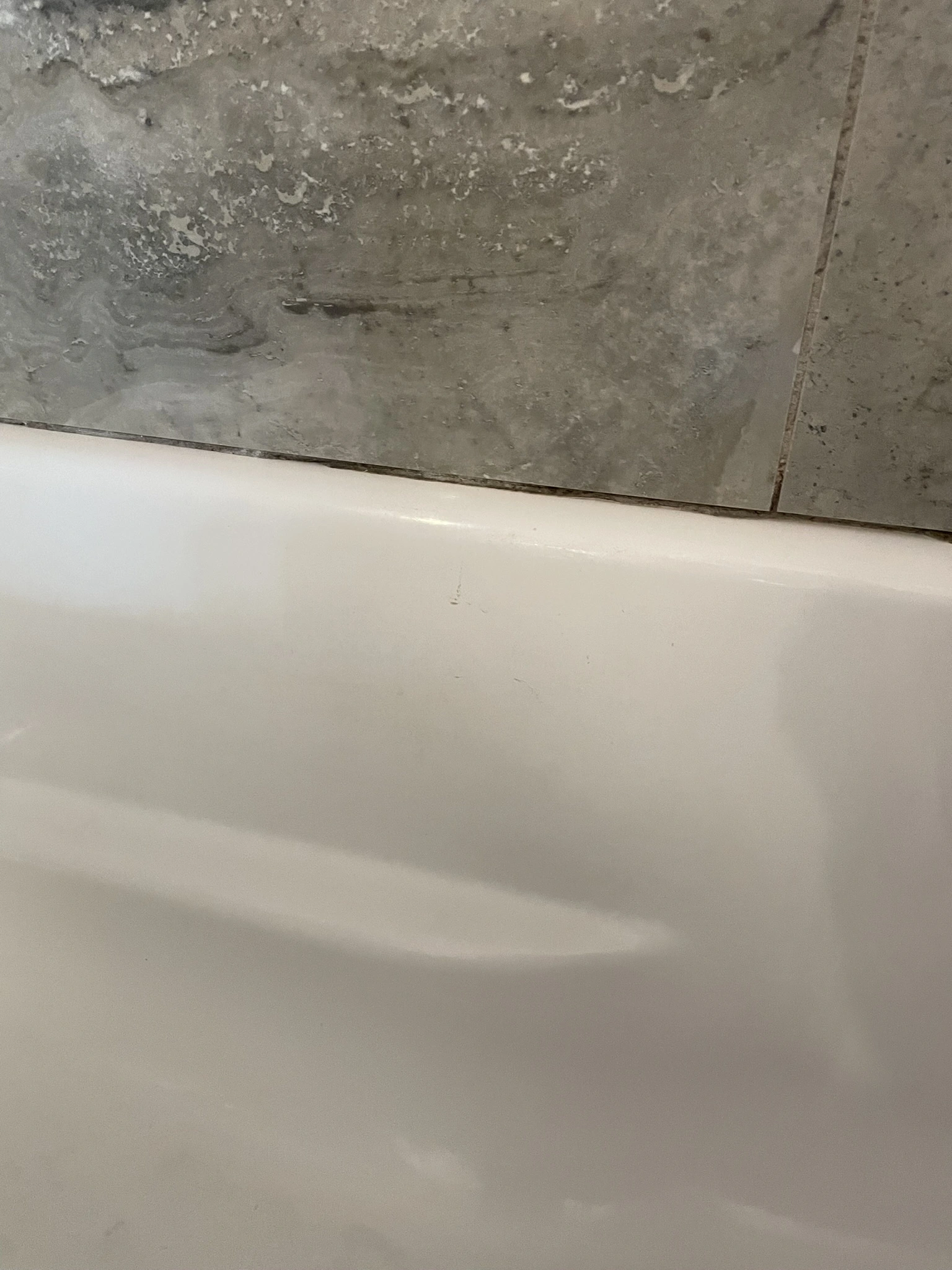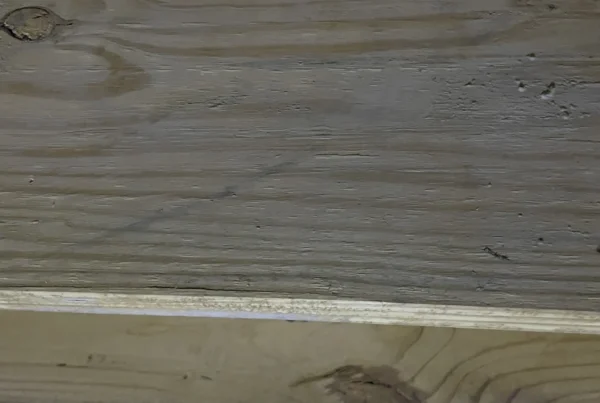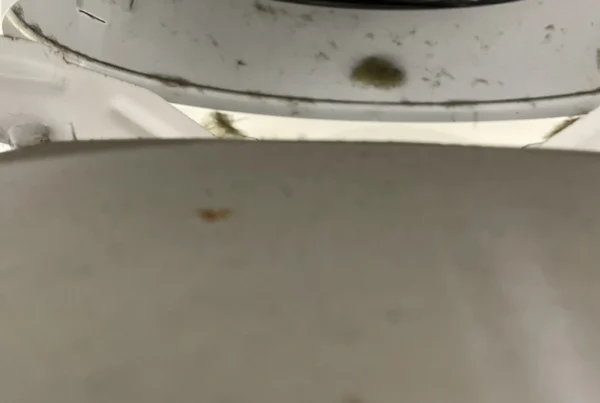
Bathroom Discoloration: Is It Mold or Something Else?
Last week I wrote about potential mold on a soffit and dealing with mold in outdoor spaces. This week’s installment of ‘Is This Mold?’ comes from inside that same house. The homeowner was concerned about a family member with acute mold sensitivity, and asked us to inspect an area of the bathroom where he suspected mold growth.
At Indiana Mold Remediation, we frequently encounter questions about discoloration in bathrooms, particularly in tile grout or caulking. This common issue often appears in corners or where tubs and shower pans meet tiled walls, regardless of the material used, including ceramic, fiberglass, acrylic or glass.
The Culprits Behind Bathroom Discoloration
While mold is often suspected, the truth is more complex. These damp areas are breeding grounds for various microorganisms:
- Bacteria: Serratia marcescens, known for its pink residue
- Yeast-like fungi: Aureobasidium
- Common mold genera: Cladosporium, Alternaria, Aspergillus
- Rare occurrences: Stachybotrys (aka “black mold” or “toxic mold”)

Professional Testing
When in doubt, professional testing can provide clarity. In many cases, what appears to be mold may actually be bacterial growth. At Indiana Mold Remediation, we offer comprehensive testing services to accurately identify the source of discoloration.
In this case, I did not feel confident to make a prediction about whether it was mold or not. I took a swab sample where the bathtub meets the tile surround and sent it to be analyzed at the lab.
Test Results
The test results indicated no fungi present in the swab sample.
- My Prediction: No Prediction
- Test Result: No, This is Not Mold

We also took some air samples to determine whether there were any significant sources of mold affecting the indoor air quality. The air test indicated some mold present, but not in significant amounts compared to the outdoor sample.

Effective Cleaning Strategies
Many homeowners, like this one, find themselves in a frustrating cycle of cleaning, only to see the problem return within weeks. Even though the growth was not mold in this case, you still want to get it cleaned up.
The Hard Water Factor
Hard water deposits can significantly complicate the cleaning process. These calcium salts tenaciously cling to surfaces, trapping:
- Skin cells and hair
- Residue from cleaning products
- Dust, dirt, etc.
This combination creates an ideal environment for microorganisms while shielding them from cleaning agents.
- Remove and replace discolored caulking
- Clean grout by first addressing hard water deposits:
- Use acidic cleaners designed for hard water and soap scum
- Allow the area to dry completely
- Follow up with bleach-based products for residual staining
IMPORTANT: Never mix acidic cleaners with bleach-based products!

Prevention Tips
- Improve ventilation in your bathroom
- Wipe down surfaces after showering
- Use a squeegee on glass surfaces
- Clean regularly with appropriate products
By understanding the complex nature of bathroom discoloration, you can take more effective steps to maintain a clean and healthy bathroom environment. If you’re concerned about persistent discoloration or potential mold growth, don’t hesitate to reach out to Indiana Mold Remediation for expert advice and professional testing services.



